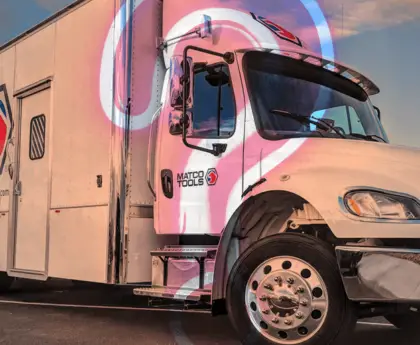Can a power screwdriver be used as a drill? You’re not alone in asking this question. Many DIY enthusiasts find themselves pondering this question at some point.
While not ideal, an electric screwdriver can be used to drill pilot holes into wood, plastic, and even some metals like aluminum.
Truth is, why its possible to use a power screwdriver to create small pilot holes, only a drill will have enough power to create a hole through the surface.
But, if you are in a jam and just need a shallow hole to get a screw or nail started, a power screw driver might just be the ticket.
This guide will provide an in-depth comparison between these two handy tools, highlighting their capabilities and limitations, to guide your decision-making process.
Let’s dive into the world of power tools and make those confusing choices simple!
Understanding the Difference Between a Power Screwdriver and a Drill
A power screwdriver is primarily designed for driving screws and has a rotational motion, while a drill is designed for drilling holes and has both rotational and axial (forward and backward) motion.
Functionality of a power screwdriver
A power screwdriver operates by converting electric power into a rotational motion. This versatile tool is crafted primarily to tighten and loosen screws, making it a vital asset in various applications such as furniture assembly, installing shelves, or fastening hardware.
With its compact size and lighter weight compared to cordless drills, the power screwdriver offers convenience for prolonged use without causing user fatigue. Electric Screwdrivers often have lower RPM (Rotations Per Minute), reflecting their primary focus on precision rather than raw drilling speed.
Some models feature adjustable torque settings to prevent over-tightening or stripping screws and adapt appropriately depending on the task.
Functionality of a drill
A drill is a versatile power tool that is commonly used for drilling holes in various materials such as wood, plastic, and metal. It typically consists of a motor, a handle, and a chuck where drill bits can be inserted.
When the trigger is pressed, the motor rotates the drill bit at high speeds, allowing it to penetrate through the material. Drills can also be equipped with different types of drill bits to cater to specific needs, such as twist bits for general drilling or spade bits for larger holes.
With its ability to generate power and speed, a drill provides efficient and precise drilling capabilities for both DIY projects and professional construction work.
Can a Power Screwdriver Be Used as a Drill?
A power screwdriver can be used as a drill in certain situations, but it has limitations and challenges compared to a dedicated drill.
Limitations and challenges
Using a power screwdriver as a drill does come with some limitations and challenges. One of the main limitations is that electric screwdrivers have a lower RPM (rotations per minute) compared to traditional drills.
This means that they may not provide the same level of power and efficiency when drilling into harder materials or dense surfaces like masonry. Additionally, electric screwdrivers are generally lighter and may not be designed to handle the high torque required for drilling tasks.
It’s important to consider these factors before using an electric screwdriver as a drill and ensure that it is suitable for the specific needs of your project.
Possible applications
Electric screwdrivers can be used as drills for certain applications. They are particularly useful for making pilot holes in wood, plastic, and soft metals like aluminum. This makes them handy for DIY projects such as assembling furniture or hanging shelves.
Additionally, cordless screwdrivers can also drill small holes in drywall when needed. However, it’s important to keep in mind that using an electric screwdriver as a drill may not provide the same power and efficiency as using a dedicated drill.
Therefore, it is crucial to consider the specific needs of the task at hand before deciding whether to use an electric screwdriver as a drill.
Pros and Cons of Using a Power Screwdriver as a Drill
Using a power screwdriver as a drill has its advantages, such as being compact and lightweight, making it easier to handle in tight spaces or for extended periods of time. However, there are also disadvantages, including limited power and torque compared to drills specifically designed for drilling tasks.
Advantages of using a power screwdriver
Using a power screwdriver has several advantages. Firstly, it offers convenience and ease of use compared to manual screwdrivers. With a power screwdriver, you can quickly and effortlessly drive screws into various materials without exerting excessive force or getting tired.
Secondly, electric screwdrivers often have adjustable torque settings, which allow for precise control when tightening screws and prevents damaging delicate surfaces. Lastly, using a power screwdriver can save time on repetitive tasks as it enables faster driving speeds than manual methods.
Disadvantages of using a power screwdriver
Can a power screwdriver be used as a drill – absolutely! But, using a power screwdriver as a drill does have some disadvantages. One major drawback is that electric screwdrivers typically have lower revolutions per minute (RPM) compared to drills, which means they may not generate enough speed and torque for certain drilling tasks.
Additionally, power screwdrivers tend to be lighter in weight and may lack the necessary power to penetrate dense materials like masonry or hardwood. Furthermore, electric screwdrivers often do not come with the same range of drill bit options as dedicated drills, limiting their versatility for different types of drilling jobs.
Finally, using a power screwdriver as a drill can put extra strain on the tool’s motor, potentially leading to premature wear and shorter lifespan.
When to Use a Power Screwdriver vs a Drill
Factors such as the material, task difficulty, and desired outcome should be considered when deciding whether to use a power screwdriver or a drill.
Factors to consider
When deciding whether to use a power screwdriver or a drill, there are several factors to consider. One important factor is the type of material you will be working with. Electric screwdrivers are better suited for softer materials like wood and plastic, while drills are more effective for dense materials like masonry.
Additionally, it’s crucial to think about the size of the holes you need to make. Electric screwdrivers can handle smaller pilot holes, while drills have a wider range of drill bit sizes available.
Lastly, consider the power and efficiency required for your task. While an electric screwdriver may work in some cases, using a dedicated drill will generally provide more strength and effectiveness.
Recommendations for specific tasks
For tasks that require drilling into dense materials, such as masonry or concrete, it is recommended to use a dedicated drill. If you are assembling a shed, you might just be able to get by with the power screwdriver. The higher RPM and impact action of a hammer drill make it more suitable for these demanding tasks.
Additionally, when working with larger drill bits or driving screws into harder woods or metals, a power drill provides the necessary power and torque. On the other hand, for lighter applications like making pilot holes in wood, plastic, or soft metals like aluminum, an electric screwdriver can be used effectively.
It is important to consider the specific needs of the task at hand and choose the right tool accordingly.
Can a Power Screwdriver Be Used As A Drill FAQs
Can a power screwdriver be used as a drill?
Yes, some power screwdrivers have attachments that allow them to function as drills. However, they may not have the same power and capabilities as dedicated drills.
What are the limitations of using a power screwdriver as a drill?
Using a power screwdriver as a drill may have limitations in terms of the size and type of holes it can create. It may struggle with harder materials or larger diameter holes that require more torque.
Are there any safety considerations when using a power screwdriver as a drill?
It is important to ensure that the attachment is securely fastened and compatible with the power screwdriver before use. Additionally, users should wear appropriate protective gear and follow safe operating procedures to prevent accidents or injuries.
Is it recommended to use a power screwdriver as a drill for major projects?
While using a power screwdriver as a drill can be convenient for small tasks, such as assembling furniture or hanging shelves, it is not recommended for major projects that require extensive drilling. For larger projects, it is best to use dedicated drills designed for those specific purposes.
Conclusion
Simply put, the answer to the question – can a power screwdriver be used as a drill, is yes. While it can be used as a drill in certain situations, it is important to consider its limitations and the specific needs of the task at hand.
Electric screwdrivers are designed for making screwing tasks easier and may not provide the same power and efficiency as using a dedicated drill.
For more demanding drilling tasks or working with dense materials like masonry, a proper drill with higher RPMs and torque would be more suitable. Ultimately, choosing the right tool for the job will ensure optimal results and safety during DIY or construction projects.





